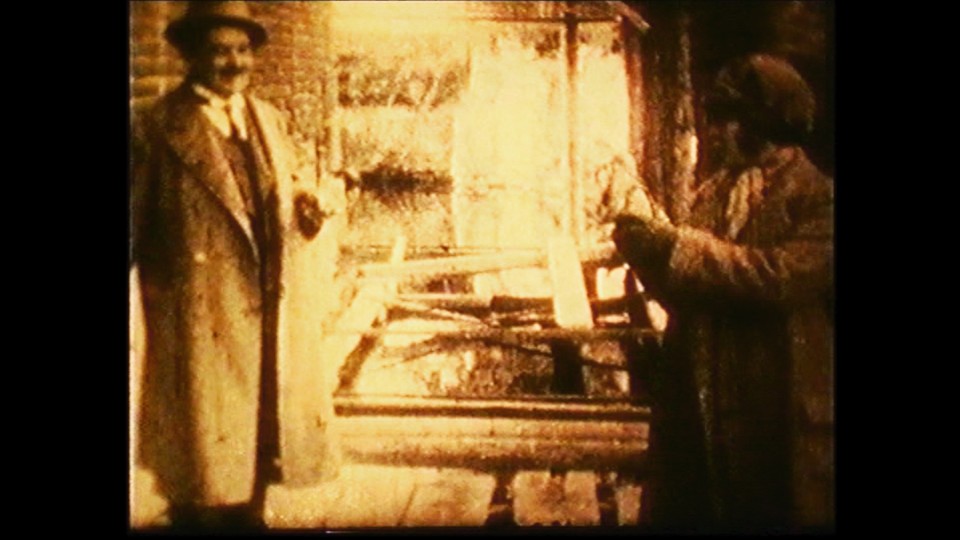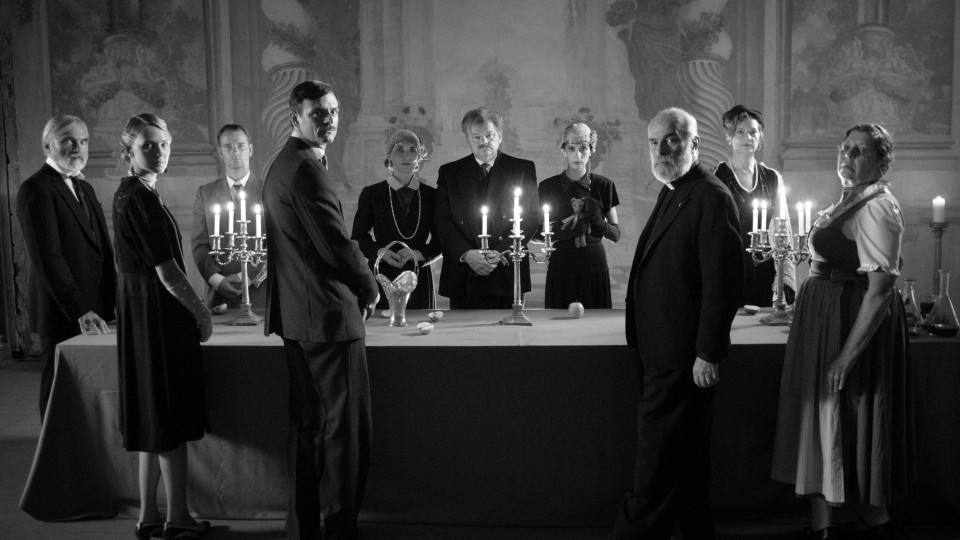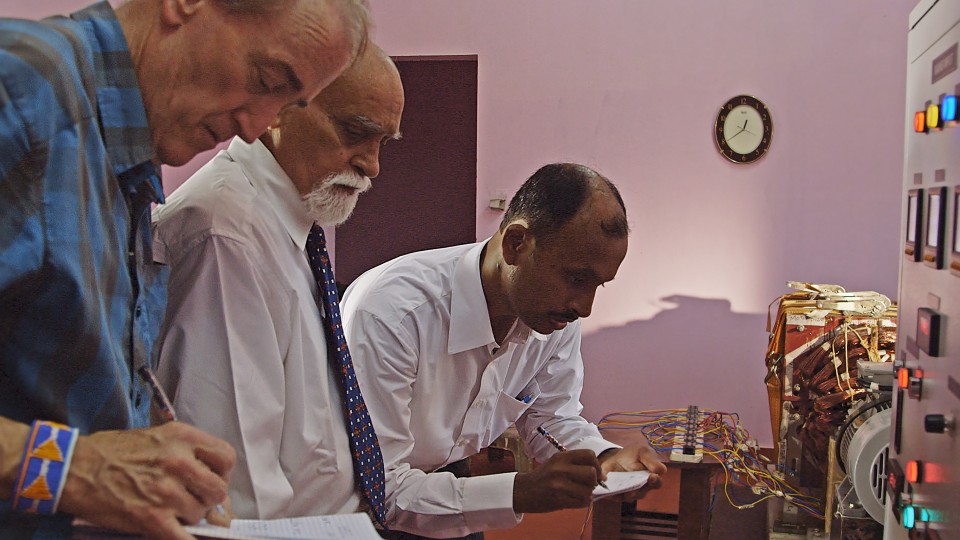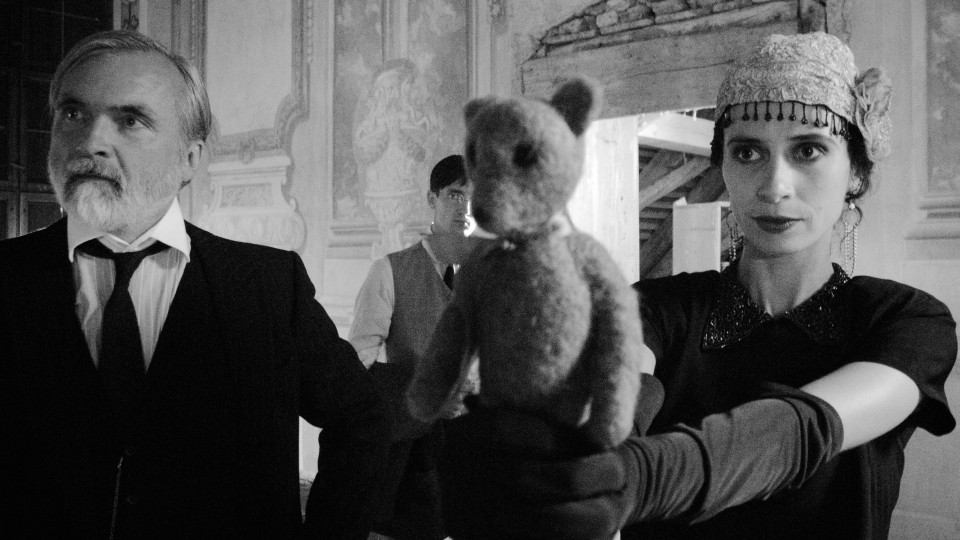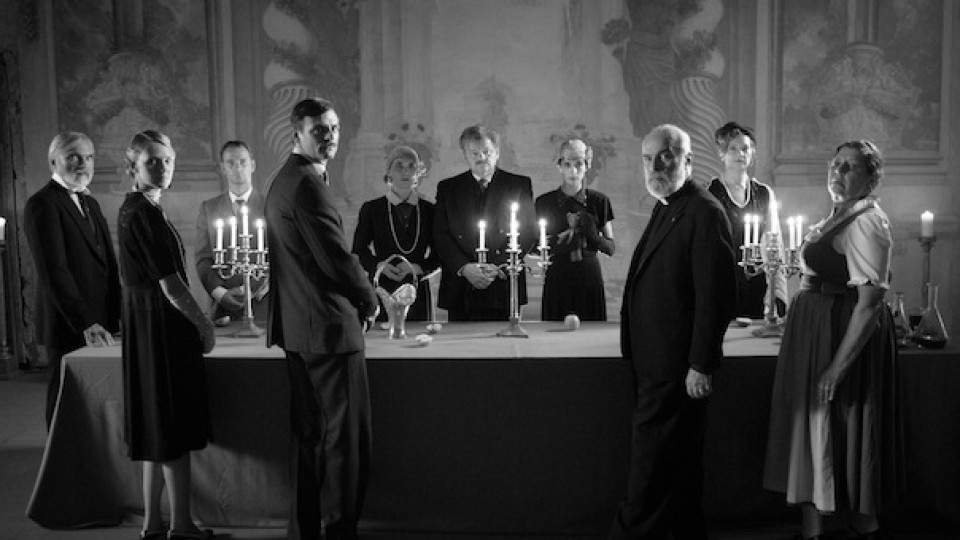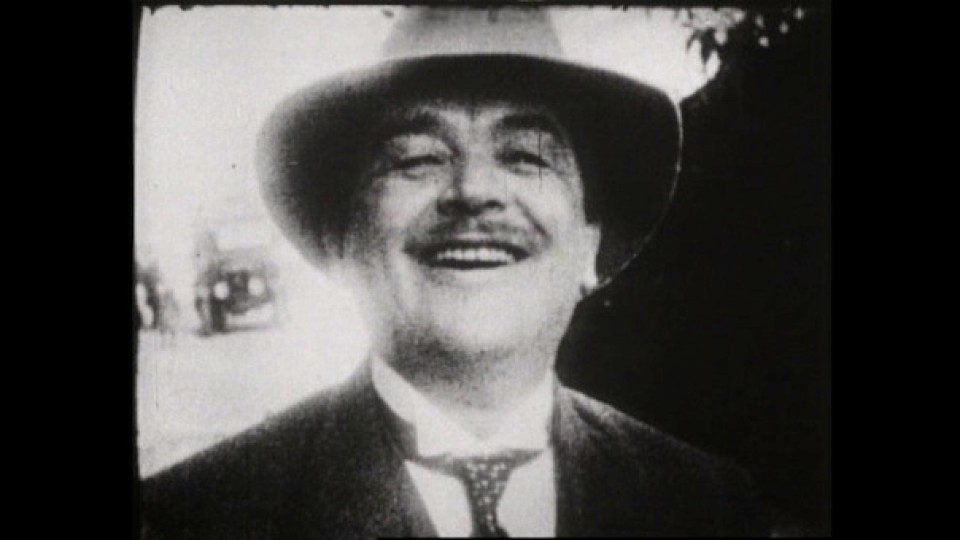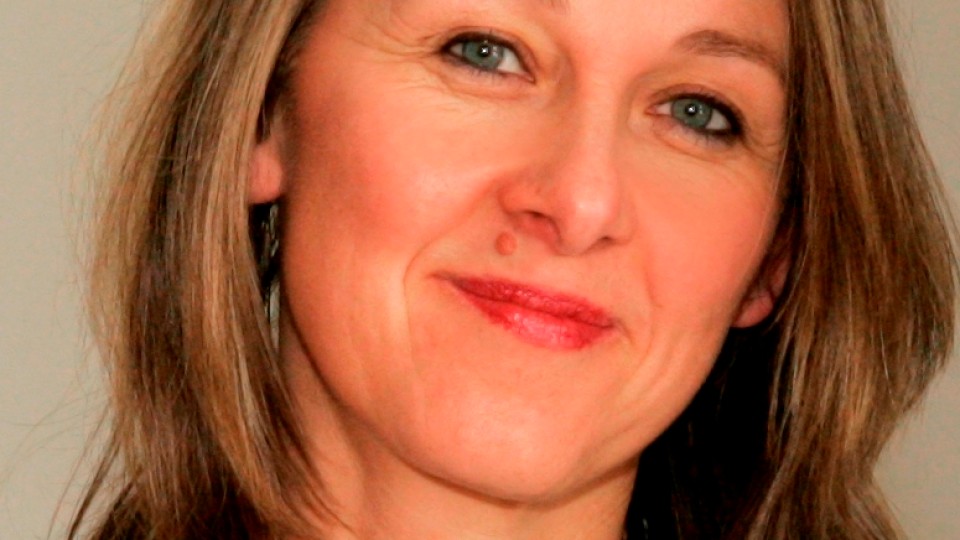How did you come across Karl Schappeller?
ANGELA SUMMEREDER: I set myself a task: namely, that of looking for stories in the immediate vicinity of the village where I was brought up. There was a road between the place where I grew up and Ried im Innkreis, the next largest town, a road which I very often travelled. I went looking for stories along this road. My assumption in doing so was that, by asking deep and probing questions, it would become possible to uncover the macrocosm within this microcosm. I also discovered the story of Zechmeister on this route, and Jobcenter investigates the institutionalised administration of unemployment by taking Ried im Innkreis as an example. Half way along the road lies Aurolzmünster, where Schappeller lived. Karl Schappeller is a local legend, around whom many stories and myths have developed. He grew up as the illegitimate child in an alms house and later worked as a postman. In the early 1920s he spent a few years living in Vienna, which at that time was a melting pot for ideas and circles connected with the occult. Schappeller moved within these circles. At the age of fifty, he then returned to the place where he had grown up as a child in the alms house. With the help of a society, he bought the castle there, with the intention of establishing a centre for research into free energy. He thought that the results of his research would change the world. Schappeller is a very ambivalent figure, with something of the charlatan about him, although there is also something very modern about him. You can sense his desire for a technology which will make progress possible without destroying resources. At the same time, there is a connection to very occult views. In the 1920s that was a very widespread phenomenon. Every small town had its guru. Schappeller is an expression of the disrupted state of people's lives at that time, following the disintegration of the Habsburg Empire: the rootlessness, the desire to be able to return once more to an idyllic past, when there had been a cohesive empire and an Emperor, justice and a sense of oneness with nature. In addition, there was a fascination with technology and machines, and with the idea that there could be a technology which would once gain make the modern world a just and harmonious place.
Is Schappeller still known in technological circles today?
ANGELA SUMMEREDER: He is known among those people who are interested in the subculture of technological innovation.
In this atmosphere of flourishing occultism in the 1920s, the church nevertheless seems to have played a very important role?
ANGELA SUMMEREDER: The church supported Schappeller with large sums of money and was therefore involved in a major way. For the people in the village, in turn, that served as a guarantee that there must be something behind it. This rather paradoxical attitude is typical of the desperate attempts by the Christian-Social Party to try to regain some of their power in society after the First World War, in this case by having access to new technology. Schappeller knew how to take advantage of this desire for his own purposes.
If one makes a connection between Out of the Void and your first film Zechmeister, then there are some undeniable common elements. One gets the impression that in the narrative of your films it is also a matter of uncovering anonymous or forgotten fates (bringing them "out of the void", as it were). Zechmeister and Schappeller are anti-heroes.
ANGELA SUMMEREDER: They are at any rate outsiders. For me, in my film narratives, it is always a matter of mixing narratives, of telling stories from the margins. In a temporal, spatial and sociological sense. In this film, that is symbolised by the image of unearthing. That is why the scene of ploughing is very prominent at the start of the film. In a further aspect, this field sequence anticipates something that comes to play an important role in the course of the film: the tension between the earth and the sky. That emerges as a principle of Schappeller's thinking and it also had something to do with the farmers' experience of reality at that time. The earth, the hardships of an existence linked to poverty and hard work. At the same time, there are all these lofty ideas, visions and dreams. All these things collide with one another and it culminates in a figure like Schappeller.
How did you manage to approach this figure?
ANGELA SUMMEREDER: Through language. I read through a great many letters and a wide range of correspondence in an archive. In doing so, I gradually acquired a feeling for the way these people thought and what made them tick. In the process, I found it interesting, for instance, that Schappeller mentioned that he had learned everything that he knew from his wife. However, significantly, there is not even a single line about his wife. No letter, no note, nothing. The challenge that I faced in my research was the following: on the one hand, to get closer to the character, and to imagine how people thought and viewed the world at that time, without the wiseacring of someone born much later, and yet on the other hand, to avoid getting "taken in by them". To have a sense of empathy, while still preserving a critical distance. I have also tried to allow the story of my research to become part of the story. I wanted the various layers to remain transparent: first of all, there was the collective myth, which is what people in the village still talk about today. In the Regional Archive of Linz there is an enormous amount of newspaper material, which primarily confirms the myth and embellishes everything surrounding it. What I was missing among the mass of documents was something to elaborate his hypotheses and his theories more precisely. By a stroke of luck, I came into contact with Peter Schlosser in Vienna, who had translated an extensive report about Schappeller's physical principle into English, and who had studied it very intensively himself. By another stroke of luck, I was able to view the film material which the Schappellers had filmed themselves. In those days, that was a sensation. Home movies from the 1920s, filmed in a 9.5 mm Pathé format with perforations in the middle of the film strip. The Schappellers shot a great deal of film. After the family members had died, the canisters of film had been piled right up to the ceiling in the dilapidated castle. At some point, an iron merchant came past, took all the cans as reusable old metal and threw away the films. Only a fraction of them has survived, and I was able, by a roundabout way, via a private collector, a Swiss man, to obtain the last of them. This material, from the 1920s and 1930s, provided a magnificent starting point for the film. It quickly became clear to me that this story could not be told by adopting a purely documentary method.
Was it easy to get the people of Aurolzmünster to talk to you?
ANGELA SUMMEREDER: In the beginning, not at all. I noticed how much this story touched upon a sore point in their lives. One can sense that there is some subconscious complex there, the fact that they were all taken in by this Schappeller. It was difficult. At first everybody said: "No, we don't know anything. We're old. We don't have anything to say." I made use of the fact that I myself came from the area, and invited them all to an information event in the town hall and tried to communicate to them why this topic was of interest to me, that it was important for me to show what traces Schappeller had left behind in the village and how the myth of Schappeller lived on in the village. I also repeatedly emphasised that was impossible for me to do alone, without their help and without their memories. In this way, the ice was broken, and from then on they were very ready to collaborate. In the end, they would have been glad to come with us to India, where we were going to shoot the next part.
Your formal approach in Out of the Void is more than multi-layered – documentary and experimental approaches are combined with scenic elements, abstract moments with concrete ones, colour with black-and-white. How did such a film language develop?
ANGELA SUMMEREDER: For me, it was primarily also a matter of finding a film language for the results of my researches, and for the atmosphere of the intellectual world in which Schappeller had moved. It was also important for me to elucidate the collective state of mind at that time cinematically. I was therefore faced by the challenge of developing a form of representation after a documentary introduction. Initially, my concept met with a lot of scepticism, particularly the idea of a re-enactment was immediately associated with a TV docudrama. Yet it wasn't my aspiration at all to reproduce situations, but rather to create an imaginative representation of atmospheres and intellectual worlds. Another of my aspirations was to incorporate language into the film. Everything that was spoken in the film comes from existing documents – letters, newspaper articles, and other material. It was important for me to shoot at the original locations and I didn't want to interview the old people, who are conveying this collective myth, with a microphone in front of the camera, but to operate with the techniques of remembrance theatre.
On the other hand, when one links this film to Zechmeister, then it would seem that this connection between filmic and scenic elements is your signature. Could one say that that defines the essence of your way of expressing yourself?
ANGELA SUMMEREDER: Basically, I regard the documentary approach as very exciting. That is the first step for me. However, I soon come up against its limitations. And then everything follows on from there, without me having to consider beforehand how such a mixed form can be found. If one is looking for a form of representation for intellectual worlds, then it leads one into a more imaginative process of presentation. When I think back to Zechmeister, the culture of reciprocal control could not have been conveyed using a purely documentary process. If I had narrated it by means of a feature film, then one would have been able to say "somebody has invented that". Then the story would have lost its authenticity.
Austrian film is rich in narrative forms along the borderline between the documentary and the fictional. Yet within this border zone you have discovered a very idiosyncratic approach.
ANGELA SUMMEREDER: That's right. However, it is annoying for the committees in the sponsoring institutions, because I can never predict exactly what will come out of my way of working. There is no completely elaborated script, but rather an experimental arrangement. Moreover, the evaluation is not made any easier by the fact that I am always being confronted with the question of whether this is a feature film or a documentary film. I now avoid this dilemma, when in doubt, by recalling what Jean-Marie Straub said, namely: "Every film is a documentary film. A feature film is nothing other than a documentary film about actors at work."
That was a cue. You wrote a dissertation on Danièle Huillet and Jean-Marie Straub. How much has their work influenced yours?
ANGELA SUMMEREDER: They are naturally great role-models for me, because they dare to tackle really big questions and subjects, and in their research they develop a quite idiosyncratic approach in a very unpretentious way. I am thinking of Hölderlin. I would never dare to translate such a difficult text into a film. I wouldn't know how one could do justice to the text. They have found a language to present things in film which would actually seem unfeasible or unfilmable to me. They have the courage to stick with the text and to get everything out of the text that it contains, so that they layer their own ideas over it.
Have Straub/Huillet also contributed something to the way that you deal with characters?
ANGELA SUMMEREDER: The freedom to associate: for example, how they confront figures from the present with historical costumes and texts and yet the present remains present. They maintain the Brechtian element, so that the construction, or what has been created, always remains visible, although a strong imaginative effect is nevertheless still there.
Your approach to space is very interesting: I am thinking of the old people, when they remember, when they walk over the field, when they enter the castle like a space that is shrouded in mystery, where they can apparently come into contact with a myth, a taboo for the first time, or the subsequent black-and-white reenactments, where the spectator has the impression of entering a space of remembrance, an abstract, mental space. Do you see it in a similar way?
ANGELA SUMMEREDER: It seemed obvious to me that in order to achieve an imaginative space I had to work with black-and-white and all its connotations. For me, it was also a matter of making a change. The fresco room in the castle is, on the one hand, the place where the old people rummage around in their memories, yet at the same time what happens is an evocation. The intention was to produce an effect, yet simultaneously to allow the construction behind it to remain visible.
The void plays a role in several ways: an apparent void – the energy from an invisible material, which was the object Schappeller's researches. On a further level it is also about the nothingness of human existence/ fate. Of Schappeller, Schlosser says: "In the final analysis, he didn't achieve anything. His life was for nothing".
ANGELA SUMMEREDER: For me, it is also a matter of the nothingness of one's own efforts when working. "Out of the void" can also be a formulation for beginning of a piece of work. I once experienced, as a guest at a theatre rehearsal, how Dagmar Schlingmann begins her work from nothing. Read and read again, wait until something comes and slowly let something arise. One does not come along with an idea that is already well advanced. One really begins from nothing. I find that interesting and courageous. The story then moves somewhere or other. For me it was also a matter of a creative void. If I want something to come into being, then I have to give space to that which is in the process of becoming. Therefore to say: here there is still nothing, something will come into being here. With regard the nothingness of existence: I think of the images of the field, of ploughing, of re-disappearance in the field. Where nothing is presumed to be, something will very probably emerge, if one digs more exactly and delves into something more exactly. That leads to the physical hypothesis that space, where nothing is presumed to be, is actually the source of some essential potential.
The film also narrates how coincidence is involved in the discovery of knowledge, or discoveries/inventions becoming publically recognised. How often does something have to be thought/invented, before it achieves a breakthrough?
ANGELA SUMMEREDER: Unfortunately, Schappeller was uneducated. He was not able to study and so he lacked the methodical tools and knowledge. However, the direction of thought then developed further, and came to fruition in other places. That is why I pursued the further development of this idea.
In the film there is this moment where Schappeller disappears and the focus is on the present. How did you manage to trace the status quo of knowledge in the field of free energy?
ANGELA SUMMEREDER: At one point, the film bids farewell to Schappeller the individual, yet continues to pursue the idea. It presents people who have developed the idea further, as if stacking one thing on top of another. With them, another way of working emerged, since they are alive today. I can ask them questions, yet I nevertheless found it important not to show them drily in their lives as scientists, but rather to give them a story. I wanted to show Claus Turtur, the German experimental physicist, in surroundings that say something about the intellectual milieu in which he moves and about the culture in which he works. I filmed him in the open-cast coal mining area of Welzow in Brandenburg. It really is an industrial wasteland there.
Also an area where there is nothing ...
ANGELA SUMMEREDER: An area where there is a wasteland/void and which demonstrates how the current methods of fossil energy utilisation are being driven to the extreme, or to an end. In addition, there was the idea that coal had played a very important role in Germany's rise after the war and at the same time has also led to this total destruction and exhaustion of resources. I found it especially interesting that the story of Paramahamsa Tewari, the researcher in India, is a St Paul story: for a very long time, he was the director of an atomic power plant, yet at some time he arrived at a point where he recognised that it had become absolutely necessary for energy extraction to go in another direction. He began to get involved and to investigate areas that he found to be really important and where he saw a potential for the future. Toby Grotz, the American researcher, has been investigating this subject for a very long time and he has travelled the whole world for that purpose. Both of them are very well acquainted with the energy branch, can see its possibilities and its limitations and have come to the conclusion that there must also be something else, because things can't continue along the same lines as they have up till now.
Can the current research work be taken more seriously than Schappeller's results?
ANGELA SUMMEREDER: That is difficult territory. I do not wish to produce any kind of evidence whatsoever with my film. For me, it was a matter of making its intellectual premises and strivings comprehensible. It was also intended that one of the themes of the film should be to show how scientific knowledge is possibly neglected because of economic interests. It would have been presumptuous of me to have taken up an unequivocal position on it. Of course, for me, it was also a matter of navigating this tightrope.
What was it like using this mixed form of documentary film and fiction film as far as your work with actors was concerned?
ANGELA SUMMEREDER: In this work I was not necessarily concerned with illustrating the individual psychological states of people. I found it exciting to confront the actors with this documentary material, with these sentences, these moods, this way of thinking, this space and the task of portraying and developing something which had moved these people. We shot the black-and-white scenes right at the start. That was a great challenge, because by the third day there were already some forty people on the set. With the old people, the actors and a team whose members were still getting to know one another, we shot the most difficult and costly sequences right at the start, in the castle.
Why did Schappeller's project come to nothing?
ANGELA SUMMEREDER: At some point or other, Schappeller withdrew and only continued to cooperate with the English, who in the Second World War became the enemy, and eventually he fell into disgrace. Within the Schappeller clan there was also disagreement about whether they should cooperate with the Nazis or not. Some of them were in favour of doing so, others were against it. Over this question the clan fell out among themselves and so the project also collapsed. That is indicated in the film by the character of Engineer Gföllner. Schappeller retreated to the position that it would be far too dangerous to go public with such an invention within politically sensitive power systems. Peter Schlosser says in the film that many people regarded that as an indication that there was nothing there at all. Yet perhaps he had discovered something and did not want to come out with it.
Interview: Karin Schiefer
October 2015
Translation by Peter Waugh

